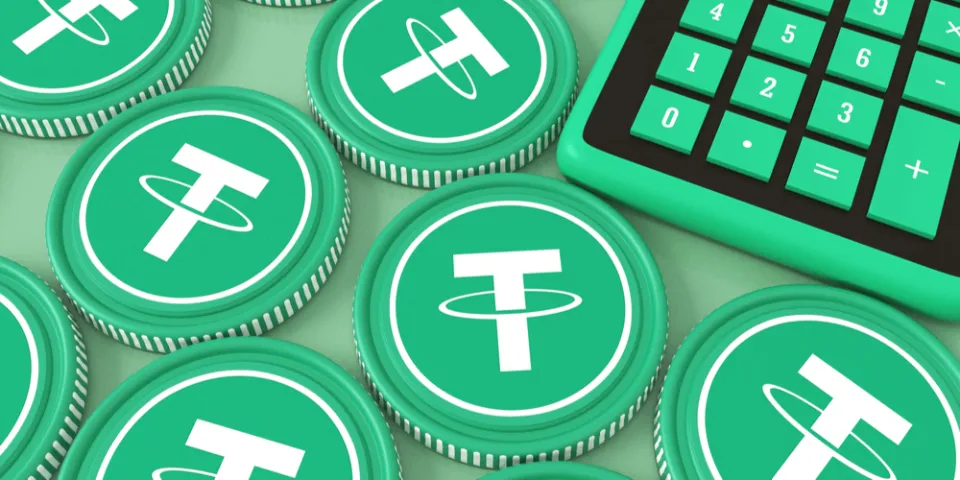With a market cap of almost $66 billion, Tether is the biggest stablecoin available in the cryptocurrency world. With a market cap of roughly $55 billion, USDC follows closely.
Using the DeFi protocol AAVE would be the simplest way to short tether. It would be extremely risky to short Tether, especially on a closely related exchange like FTX.
However, USDT used to have a bigger market cap than even that. An enormous amount of pressure has been placed on USDT ever since the Terra UST stablecoin crashed. In May, CNBC reported that over $7 billion worth of Tether had been withdrawn. The USDT coins were essentially taken back by Tether and exchanged for fiat money.
Backing of USDT
In contrast to UST (Terra), USDT is meant to be backed by actual dollars. UST, on the other hand, was supported by an arbitrage algorithm that utterly failed. But there have been rumors about Tether’s coin’s partial backing ever since the company was founded. In that case, a USDT token would have no value at all. The company also started to post regular “attestations.” These demonstrate that a significant amount of their funds were actually invested in commercial papers. That could be disastrous.
Approximately $1 billion in loans to Celsius were recently repaid by Tether. As you may recall, Celsius recently declared bankruptcy as a result of the failure of Three Arrows Capital. Let’s ignore the fact that a sizable portion of the funds intended to support their stablecoin were instead invested in a high-risk business for the time being. Additionally threatened right now is the recovered amount. The Financial Times reports that Celsius may be able to recover those funds as a result of their bankruptcy filing.
So all in all, we can see that Tether could potentially spell trouble for the crypto space.
Protecting Against the Risks of a USDT Depeg

There are a few ways you can safeguard yourself from the risks of the USDT collapsing. The simplest option would be to simply short USDT. That entails making money when Tether’s peg to the US dollar is broken.
It is not that simple to short Tether, as you will discover if you try. A short position on USDT is hardly ever offered.
However, if we look at how “shorting” essentially works, we can do it ourselves. Shorting an asset works pretty easily.
- Borrow the asset
- Instantly sell the asset
- Buy back the asset and give it to the lender if the asset’s value drops.
Take a 1000 USDT loan, for instance. Then, let’s say for 1000 DAI, we immediately sell those USDT. If the value of the Tether token actually falls (i.e. loses its peg) by 50%, we can then buy back our 1000 USDT for 500 DAI, then pay back the loan. In the end, we still own 500 DAI.
Read More:
- Tether (USDT) Price Future Prediction for 2021-2025
- USDC vs. USDT – Which Stablecoin Is Better In 2022?
How to Short Tether
So using the DeFi protocol AAVE would be the simplest way to go about it. Simply supply another stablecoin like DAI or USDC and borrow USDT. Finally, exchange USDT for DAI or USDC and wait.
You won’t owe as much money as you actually borrowed if USDT loses its peg. Because you only use stablecoins for the process, the currency risks are greatly reduced. If you choose to supply other crypto like Bitcoin, for example, you are running a risk of being liquidated if the price of Bitcoin drops too low.
Simple, right? There are some disadvantages, so be aware of those. Borrowing USDT entails expenses. The providers who take part in those DeFi protocols are compensated at your interest rate. Typically, USDT offers a greater interest rate than other stablecoins. This suggests that you will have to pay a higher interest rate on USDT than you would, for instance, if you supplied DAI.
Therefore, it is possible to short the USDT. It’s also simple, but you should be aware of its disadvantages as well.

Drawbacks
It sounds simple, but there are some disadvantages you should be aware of. Borrowing USDT comes at a cost. Those DeFi protocols pay their suppliers at the same interest rate as you. When compared to other stablecoins, USDT typically offers a higher interest rate. To put it another way, you will have to pay more interest on USDT than you would by, say, supplying DAI.
You are essentially placing a bet on a disaster that may never occur. You will also be paying for the duration of that time to maintain your position.
Keep in mind that the APYs for supply and borrowing could also change.
Conclusion
It is possible to wager against Tether. But you should consider carefully if that is what you want to do. If a Tether depeg happens, you could earn big. Your earnings will disappear if it doesn’t.
Disclaimer: This is not financial advice. Conduct independent research and make your own decisions.
FAQs
Can I Short Sell Tether?
You can do it directly on FTX, or you can do it on ethereum by borrowing tether on aave against, say, USDC, and then selling it for USDC. If you’d like, you can do this in a sizeable format of at least eight figures. It would be extremely risky to short Tether, especially on a closely related exchange like FTX.
Why Are People Shorting Tether?
Stablecoins can be used as a hedge against long cryptocurrency bets or as an outright bet against the token by either borrowing them and then selling them in the hopes of buying them back later at a lower price, or by using swaps.
Can I Short Tether on Coinbase?
You can exchange your ETH for 3X Short Tether Gold Token directly in the mobile app or browser extension once you’ve added it to your Coinbase Wallet.



